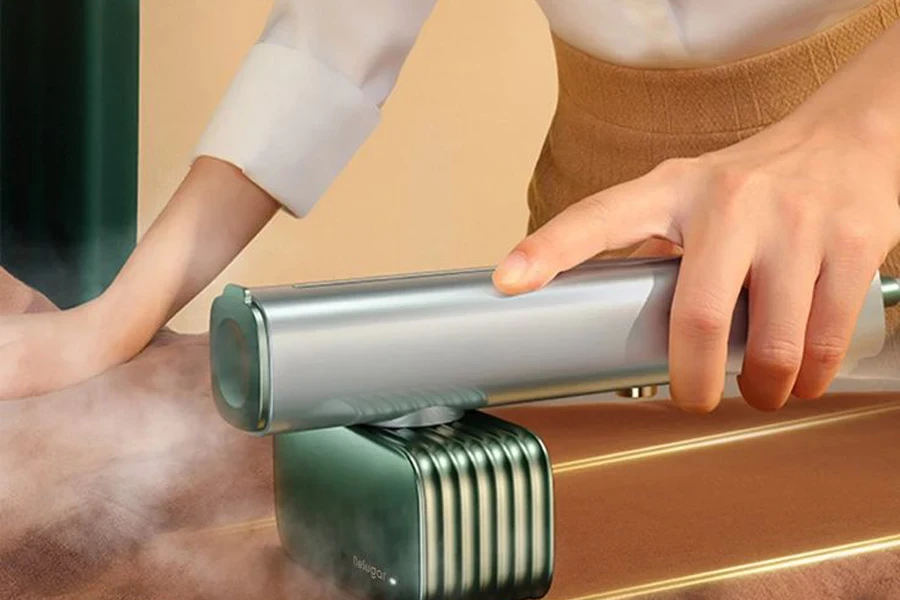In 2024, the world of home steamers continues to evolve rapidly, introducing groundbreaking technologies that redefine the convenience and efficiency of garment care. With the market bustling with innovative models, each boasting unique features and capabilities, selecting the right steamer has become more crucial than ever. The current landscape showcases a remarkable blend of advanced design and functionality, catering to a wide array of household needs and preferences. For discerning consumers and professionals alike, understanding these advancements is key to making an informed choice that aligns with both lifestyle and quality expectations. As we navigate this dynamic market, the emphasis on choosing a steamer that not only meets but exceeds daily requirements becomes a pivotal aspect of modern home management.
Table of Contents:
1. Market overview
2. Key design and material innovations
3. Top-sellers driving market trends
1. Market overview

The global steamers market has been demonstrating robust growth. According to Business Research Insights, the market size was valued at USD 1570 million in 2022 and is projected to expand to USD 2754.46 million by 2031. This growth trajectory represents a Compound Annual Growth Rate (CAGR) of 5.78% from 2022 to 2031. This surge is attributed to the heightened demand for steamers across various regions, a trend that surpassed pre-pandemic levels.
The market’s growth has been notably influenced by evolving lifestyles and improved living standards, leading to increased disposable income. Consequently, there has been a rise in expenditure on household goods, including steamers. This consumer behavior reflects the preference for convenience and efficiency in daily chores. The segment is also propelled by a growing number of working women and the overall inclination towards easy-to-use, portable, and versatile appliances.
A key factor driving the market is the product’s utility in various sectors, ranging from laundry care to carpet cleaning. The market dynamics have been further shaped by increased advertising campaigns by industrial businesses, emphasizing the superior competency of steamers compared to traditional flat irons. However, challenges such as price discrepancies and heightened competition, primarily from local manufacturers and unorganized retailers, have impacted market growth. These factors have played a crucial role in shaping the handheld steamers market landscape, making it a competitive and innovative segment within the home appliance industry.

2. Key design and material innovations
In 2024, the home steamer market is witnessing a remarkable revolution in design and material innovations. These advancements are not just about aesthetics; they are about enhancing functionality, user experience, and environmental sustainability.
Many steamers now feature lightweight builds and intuitive handgrips, tailored to reduce user fatigue and enhance the overall steaming experience. Additionally, the incorporation of adjustable steam settings and pivoting heads in models like Conair Turbo ExtremeSteam and Conair Power Steam reflects a commitment to versatility and user-friendliness.
Space efficiency is also a critical factor in current steamer designs. In line with Real Simple’s findings, manufacturers are introducing compact models that are ideal for consumers with limited storage space or those who travel frequently. These compact steamers, such as the travel-friendly models highlighted by Real Simple, offer powerful performance in a smaller, more portable package. The ability to steam in any direction without dripping, as seen in the CHI Steam Handheld Garment Steamer, exemplifies how design innovation is making steamers more adaptable to various living environments.

A critical aspect of modern steamer design is the use of advanced materials that offer unique benefits. For instance, ceramic-coated steam plates, as seen in models like the Conair Turbo ExtremeSteam, are gaining popularity. Ceramics provide an even distribution of heat, minimizing the risk of fabric damage. This makes ceramic-coated steamers ideal for delicate fabrics like silk or chiffon, where even heat distribution is crucial to prevent scorching.
Another innovative material in use is reinforced polymers for the outer casing of steamers. These polymers are known for their durability and resistance to heat and impact. For busy households or commercial settings where steamers are frequently used and moved around, these materials offer the necessary robustness to withstand daily wear and tear.
Stainless steel is also being employed in steamers, particularly in the internal components like the boiler. This material is resistant to rust and scale buildup, making it an excellent choice for longevity and consistent performance. Stainless steel steamers are particularly suitable for areas with hard water, as they are less prone to limescale accumulation, which can hinder steam efficiency.

Manufacturers are also exploring the use of biodegradable materials and recyclable plastics in response to increasing environmental concerns. Such materials reduce the carbon footprint of steamers and appeal to eco-conscious consumers. For example, steamers with components made from recycled plastics or biodegradable composites offer a sustainable choice without compromising performance.
On the technical front, steamers are seeing innovations like variable steam controls and rapid heating technology. Variable steam allows users to adjust the intensity of the steam output, which is vital for different fabric types. For instance, heavier fabrics like denim require more intense steam, while delicate garments need a gentler touch. Rapid heating technology is another advancement, reducing wait times and enhancing convenience, especially for users with busy schedules.
3. Top-sellers driving market trends
The year 2024 has seen a surge in innovative steamer models, each playing a pivotal role in shaping market trends and consumer preferences.

In the handheld steamer category, the Conair Turbo ExtremeSteam Handheld Fabric Steamer stands out. This model is acclaimed for its versatility, offering five steam settings that cater to a wide range of fabrics. Its ceramic faceplate allows for a smooth glide over garments, making it a favorite for both delicate and sturdy fabrics. This product exemplifies the trend towards multi-functional, user-friendly appliances in the home steaming market.
Another notable model is the MagicPro Garment Steamer, which Real Simple identifies as a budget-friendly yet highly effective option. It heats up rapidly and is capable of tackling most wrinkles in one to two passes. This model’s popularity underscores the growing consumer demand for affordable, high-performance steamers that don’t compromise on quality.
For those seeking professional-grade steamers, the Jiffy Steamer Garment Steamer, as featured by Good Housekeeping, sets the bar high. Known for its longevity and robust steam production, this model is a staple in the fashion and photography industries. Its influence on the market is significant, with many consumers looking for reliable, heavy-duty options for their more demanding steaming tasks.
The trend towards travel-friendly steamers is also evident, with models like the Conair Power Steam Handheld Travel Garment Steamer gaining traction. As highlighted by The New York Times, this model’s compact design and dual voltage capability make it an ideal choice for consumers on the go, reflecting a market shift towards portable and convenient steaming solutions.
These top-selling models not only meet diverse consumer needs but also drive innovation in the steamer market. Their success is reshaping consumer expectations, with an increasing emphasis on versatility, efficiency, and convenience. As a result, manufacturers are compelled to continually innovate, leading to a dynamic and ever-evolving market landscape.

Conclusion
As we have explored, the world of home steamers in 2024 is characterized by remarkable advancements and diversity. The steamer market’s trajectory into 2024 indicates a profound shift in household garment care. Steamers have become more than just tools for removing wrinkles; they are now integral components of a modern, efficient, and environmentally conscious lifestyle. Their impact extends beyond the wardrobe, offering a convenient, quick, and sustainable alternative to traditional ironing methods. As this market continues to grow and adapt, it will undoubtedly keep offering innovative solutions that align with the dynamic needs and values of contemporary consumers.




